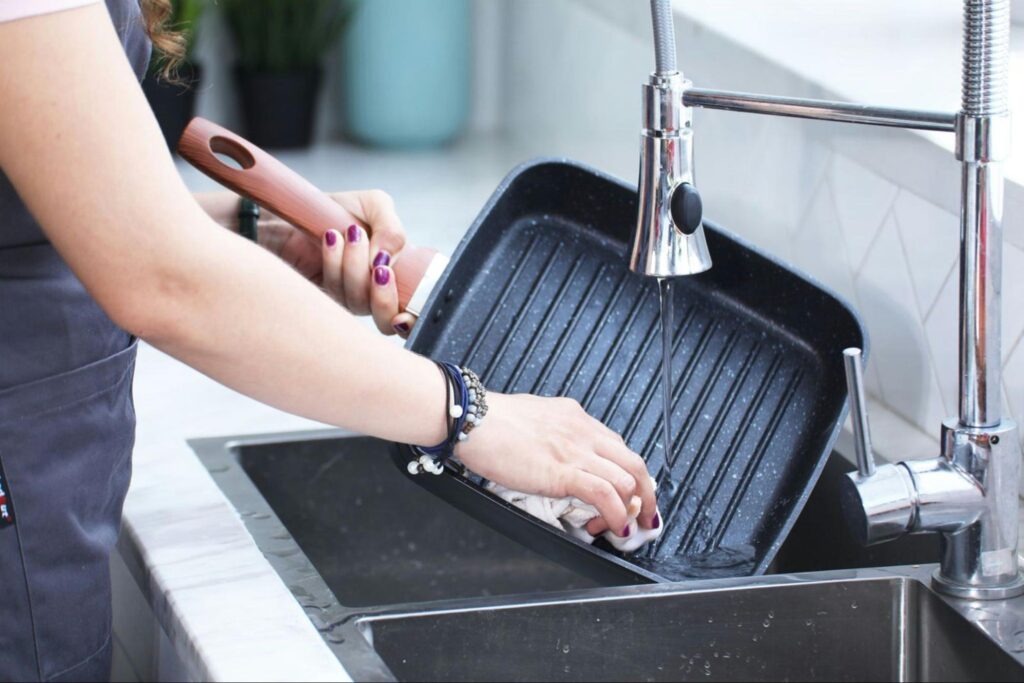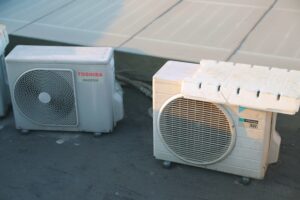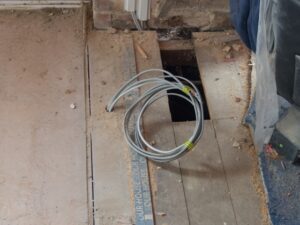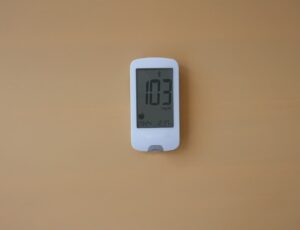Have you ever been frustrated by low water pressure in your kitchen sink?
It can be a major inconvenience, especially when you’re trying to wash dishes or prepare meals. The most common culprit is a clogged aerator, which is a simple fix—either clean or replace it.
Isn’t it great when a quick, easy fix can restore normal water flow?
By tackling this early on, you’ll improve water pressure and prevent more serious plumbing issues down the road. If cleaning the aerator doesn’t do the trick, it might indicate a deeper issue, such as a blockage in the pipes or problems with your pressure settings.
Ever felt like the problem might be bigger than just a dirty filter?
That’s when it’s time to call in a professional.
At Excel Mechanical, we specialize in providing reliable plumbing solutions that save you time and frustration. We understand how important it is to have your plumbing running smoothly, and we’re here to help with high-quality services tailored to fit your needs and budget.
In this blog, you will learn:
- The common causes of low water pressure in your kitchen sink
- Easy troubleshooting steps to fix the issue
- How professional services can help with more complex problems
Let’s break down what might be causing your water pressure problems and how to fix them effectively.
Common Causes of Low Water Pressure
Low water pressure in your kitchen sink is often due to specific, fixable problems. Understanding these issues can help you address them effectively.
Clogged Aerator
The aerator is a small screen attached to the faucet’s tip. It mixes air with water to reduce splashing.
Over time, minerals and debris can block this screen, causing low water pressure. To fix this, unscrew the aerator from the faucet, check for any visible clogs, use a toothbrush or needle to clean out any debris, and soak the aerator in vinegar to dissolve mineral buildup.
Once clean, reattach the aerator and test the water pressure. Regular cleaning can prevent future clogs.
Obstructed Pipes
Mineral deposits or debris can obstruct pipes, especially in older plumbing systems. This blockage reduces the flow of water, leading to lower pressure.
Inspect the pipes for visible leaks or damage. You may need to contact a professional to check for blockages within the pipes. Regular maintenance can help prevent obstructions.
Faulty Faucet Cartridge
The faucet cartridge controls the flow and mix of hot and cold water.
If it becomes clogged or damaged, water pressure might drop. To address this, you must disassemble the faucet to access the cartridge. Once removed, inspect it for damage or blockage. Clean it carefully or replace it if necessary.
Reassemble the faucet and check if the pressure has improved.
Closed Shut-Off Valve
Sometimes, the shut-off valve under the sink may not be fully open. This limits the water supply and causes low pressure.
Locate the shut-off valves, usually under the sink. Check that they are turned fully counterclockwise to open. If the pressure doesn’t improve, further investigation might be necessary.
Ensure the valves are kept open unless plumbing work is needed. Regular checks can prevent this issue from affecting your water pressure.
Initial Troubleshooting Steps
Start with a few simple checks when experiencing low water pressure in your kitchen sink. Focus on potential blockages, leaks, and valve settings to identify the cause. These easy steps can help you find the problem and restore normal water flow.
Inspecting the Aerator
Look at the aerator, the small screen on the faucet’s tip.
Over time, mineral deposits or debris can clog this screen. To clean it, remove the aerator by unscrewing it carefully. Rinse it under water to remove buildup. If necessary, use a toothbrush or a small brush to scrub off stubborn deposits. This simple action can improve water flow.
Reattach the aerator and check if this solves the issue. If the problem persists, continue with the next steps for further inspection. This is an easy task you can do without needing professional help.
Checking for Leaks
Next, inspect the area under the sink and nearby pipes for leaks.
Leaks can cause reduced pressure and higher water bills. Feel around pipes and fittings for moisture. If you spot water, tighten any loose connections. Sometimes, worn-out washers or seals can also lead to leaks.
Replacing these parts might fix the issue. Ensure pipes are not visibly damaged or corroded. If leaks are severe or challenging to identify, contacting professionals like Excel Mechanical might be necessary for thorough repair.
We offer exceptional quality and great value for all plumbing services.
Verifying Valve Positions
Check the water valves under your sink.
The shut-off valves control water flow to the sink and might be partially closed. Turn them counterclockwise to ensure both hot and cold water valves are fully open. If you have multiple sinks, compare the valve positions to see if they match.
Sometimes, recent plumbing work or accidental adjustments may have altered the settings. Double-check to ensure valves are in the correct position.
Advanced Diagnostic Techniques
Understanding some advanced diagnostic techniques can be key when dealing with no water pressure in your kitchen sink. Pressure testing, pipe inspection, and water supply analysis are vital methods to identify underlying issues and enhance water flow.
Pressure Testing
Pressure testing helps determine if there’s an issue with your home’s water pressure.
Use a pressure gauge to measure the water pressure at various points. Attach it to the faucet or a connected pipe and check if the pressure falls within the typical range (usually around 40 to 60 psi for residential systems).
Low-pressure readings could indicate a blockage or a problem with the pressure regulator. A high reading might mean there’s an issue with the system that’s supplying too much pressure. This data helps pinpoint problems that might be unseen.
For accurate results, ensure all faucets and valves are off before starting. If the readings are consistently abnormal, it might be necessary to consult experts who provide professional HVAC and plumbing services, ensuring high-quality solutions for both residential and commercial needs.
Pipe Inspection
Inspecting the pipes can reveal blockages or leaks that affect water pressure.
Start by checking exposed pipes for signs of rust, corrosion, or leaks. Listen for unusual sounds when the water runs, such as gurgling or hissing, indicating air blockages or damage.
For hidden pipes, utilize a camera inspection tool. This specialized equipment visualizes hard-to-reach areas, helping locate the exact point of any obstruction or damage. Specific problems, like mineral build-up or rust, can severely restrict water flow.
Regular inspection can prevent severe issues.
Water Supply Analysis
Analyzing the water supply involves checking the main water valve and the municipal supply line.
Verify that the main valve is fully open to ensure optimal flow. Partially closed valves can often be overlooked and affect pressure. Consider contacting your water supplier to check if recent municipal supply changes could impact your home. They might be conducting repairs or adjustments that temporarily affect pressure, which is often overlooked.
Understanding how these elements impact water pressure allows you to address and rectify issues efficiently. If persistent problems occur, enlisting professionals ensures your home’s plumbing system is optimized for performance and reliability.
Repair and Replacement Solutions
Addressing water pressure problems in your kitchen sink involves specific repair strategies. Common solutions include cleaning or replacing the aerator, fixing leaks, and adjusting or replacing valves. Each method targets likely causes of weak water flow, ensuring effective resolutions.
Cleaning or Replacing the Aerator
The aerator, attached to the faucet, may collect debris that blocks water flow.
- First, remove the aerator by unscrewing it from the faucet to fix this.
- Check for any visible dirt or sediment.
- Soaking the parts in vinegar can dissolve mineral buildup.
- If cleaning doesn’t help, consider replacing the aerator. New aerators are affordable and can be found at most hardware stores.
- Choose the correct size and flow rate for your faucet.
Proper installation ensures smooth operation and improved water pressure.
Repairing Leaks
Leaks can significantly reduce your kitchen sink’s water pressure.
- First, inspect the pipes under your sink for any signs of water or dampness. Tighten loose connections with a wrench to see if this resolves the issue.
- If the leak persists, replace washers or apply a sealant.
Professional assistance may be necessary for complex issues, such as corroded pipes. We offer expert services to ensure efficient and thorough leak repairs.
Adjusting or Replacing Valves
Valves play a crucial role in regulating water flow.
- Check if your shutoff valve is fully open, as partially closed valves can restrict water pressure.
- Turn the valve counterclockwise to open it fully.
- If pressure issues continue, the valve may be faulty or old. Replacing a malfunctioning valve can resolve the problem.
- For such tasks, professional help can ensure the valve fits properly and functions correctly.
Preventative Maintenance
Regular preventative maintenance is essential to keep your kitchen sink in perfect order. It helps avoid common issues like low water pressure and extends the lifespan of your plumbing system.
By adopting a few easy practices, you can ensure smooth water flow and minimize disruptions.
Regular Cleaning
Regular kitchen sink cleaning can prevent blockages that lead to low water pressure.
Remove the aerator from the faucet and soak it in vinegar to dislodge mineral deposits. Use a brush to scrub off any remaining buildup. This step ensures that water flows freely through the faucet.
Clean the drains with baking soda and vinegar to clear any clogs. Afterward, pour boiling water down the drain to flush away debris. Regularly cleaning the sinks and drains helps maintain optimal pressure and prevent future blockages.
Routine Inspections
Perform routine inspections of plumbing components to catch potential issues early.
Check for leaks under the sink, which can affect water pressure. Inspect visible piping for any signs of corrosion or wear. Early detection of these problems can prevent more significant issues.
Test the faucet valves to ensure they’re fully open. If you notice unusual pressure changes, it might indicate an internal problem that needs attention. Regular inspections can help maintain consistent water flow and prevent costly repairs.
Installing Water Pressure Regulators
Installing a water pressure regulator can help manage water flow and maintain steady pressure. This device is beneficial if your household experiences frequent fluctuations or has low pressure. It controls the pressure entering your home’s plumbing system.
Excel Mechanical can assist in selecting and installing the right water pressure regulator. As HVAC and plumbing services experts, we prioritize exceptional quality and value. Our team ensures the chosen system fits your specific needs and budget. This installation can prolong the life of your plumbing fixtures and improve everyday usage.
Following these maintenance steps can prevent common plumbing problems and enjoy consistent water pressure in your kitchen sink.
Professional Services
Professional services can offer effective solutions and long-term support when dealing with low water pressure in your kitchen sink. Consult with experts, consider system upgrades, and ensure ongoing maintenance can restore and maintain proper water flow.
Consulting a Plumber
Consulting a professional plumber is a wise choice if you’re experiencing persistent low water pressure. A plumber can accurately diagnose the problem, whether it’s a blocked aerator, a pressure setting issue, or a more complex plumbing system concern.
Plumbers with specialized tools and experience provide precise assessments and actionable solutions, preventing guesswork and potential complications. Trusting experts like Excel Mechanical ensures quality service tailored to residential and commercial settings.
Our commitment to exceptional value and system-specific solutions makes them a reliable option.
System Upgrade Recommendations
Sometimes, solving water pressure issues may require more than just basic fixes.
Upgrading parts of your plumbing system might be necessary, especially for older homes or systems that frequently face pressure problems.
Professionals can recommend specific upgrades, such as installing modern pressure regulators or high-quality pipes. These improvements not only address current issues but also enhance overall system efficiency.
Ongoing Support and Maintenance
Regular maintenance and ongoing support are crucial in preventing future water pressure problems.
Scheduling routine checks with a reliable service ensures any emerging issues are addressed quickly, reducing the risk of significant disruptions. Professionals can perform inspections, cleanings, and adjustments to maintain optimal water flow.
Our proactive maintenance services provide value-driven care tailored to your property’s unique requirements.
Understanding Water Pressure
Water pressure in your kitchen sink is crucial for washing dishes and preparing food. Proper pressure ensures efficient water flow and helps avoid disruptions. Knowing how to measure water pressure and what factors can affect it is essential.
Measuring Water Pressure
To measure water pressure, you’ll need a pressure gauge. This device attaches to the faucet and provides a reading, typically in pounds per square inch (psi).
Domestic water pressure generally ranges from 40 to 60 psi. If you notice issues, it’s essential to measure them to ensure they fall within this range. Too low or too high pressure can lead to problems in your plumbing system.
Checking water pressure regularly helps maintain your plumbing’s efficiency and identify issues early.
Factors Affecting Pressure
Several factors can influence the water pressure in your kitchen sink.
- Blockages in the aerator or pipes can decrease flow.
- Mineral buildup is a common culprit, especially in areas with hard water.
- Pressure settings in your home’s plumbing system also matter. If the pressure is inconsistent, you might need to make adjustments.
- Local water supply issues can also affect pressure.
A well-maintained plumbing system is crucial for consistent water flow.
Legal and Safety Considerations
When you face issues with water pressure in your kitchen sink, it’s crucial to understand the legal requirements and safety practices involved in the repair process.
Adhering to these guidelines ensures both compliance and safety.
Compliance With Building Codes
Before making any repairs, check your local building codes. These regulations ensure that plumbing work is done safely and meets regional standards.
Non-compliance might lead to fines or even more severe legal issues. Codes often dictate what materials and techniques can be used, so understanding these is essential.
Hiring a licensed professional often ensures compliance. They stay updated with the latest changes in regulations and can navigate complex requirements effortlessly.
Safe Repair Practices
Safety during repairs is essential to prevent accidents and further damage.
Always turn off the water supply before beginning any work on your sink. It’s a simple but crucial step to avoiding water damage and injuries.
Using the correct tools and wearing safety gear minimizes risks.
If unsure about any step, consider contacting professionals. With residential and commercial plumbing expertise, Excel Mechanical offers safe, reliable, and high-quality service.
Always prioritize safety and professionalism in any repair project.
Frequently Asked Questions
If you’re experiencing low water pressure in your kitchen sink, it’s important to understand possible causes and solutions. Here are answers to some common questions that can help address your concerns.
What steps can I take to diagnose low water pressure in my kitchen sink?
You should start by checking the aerator for clogs, as mineral deposits often accumulate there. You can also inspect the shut-off valves under the sink to ensure they are fully open. These simple checks often resolve pressure issues.
What could be causing low water pressure in my kitchen faucet but not elsewhere in the house?
The issue might be specific to the faucet. Look for clogs in the aerator or check if the faucet is faulty. Problems in only one location often indicate a local obstruction or defect.
How do I fix the low water pressure in my kitchen sink after installing a new faucet?
Ensure the new faucet is installed correctly. Then, check the water pipes and ensure no kinks or clogs. Also, verify the aerator is not obstructed, which is a frequent problem after installation.
Why might there be low hot water pressure in the kitchen sink only?
Low hot water pressure might be caused by sediment buildup in the water heater or a partially closed valve. It could also be linked to the kitchen’s plumbing lines being different from those in other areas.
Can a malfunctioning kitchen sprayer affect sink water pressure, and how can it be remedied?
Yes, a faulty sprayer can cause low pressure. Ensure the diverter valve, which controls water flow between the faucet and sprayer, is functional and blockage-free. Replacing a compromised sprayer may be necessary.
What are common reasons for water merely trickling out of a kitchen faucet?
This could be due to significant mineral buildup in the aerator or a more serious plumbing blockage. Investigate both the aerator and the home’s plumbing system for trapped debris or obstructions.




